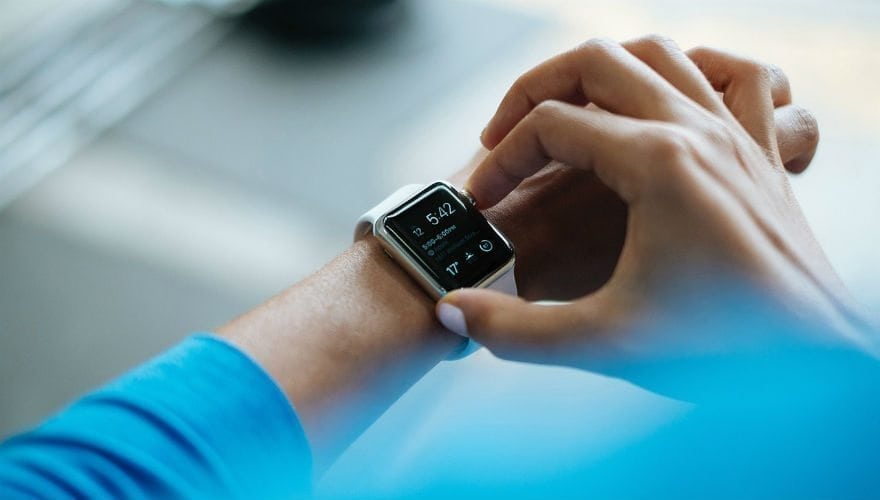The digital health landscape is littered with wearable devices and digital health apps that caught on like wildfire at first, only to be abandoned over time by consumers. It’s the modern equivalent of the unused gym membership, purchased on New Year’s Day, only to be forgotten within a few months. The problem isn’t with the consumer moving on to the next shiny thing; it’s the short-sighted approach to the design of the devices and their corresponding apps.
The growth of non-communicable diseases (NCDs) and the toll these illnesses are taking on society and the economy is one of our generation’s biggest challenges. The majority of NCDs are believed to stem from four key risk factors: tobacco smoking, poor diet, physical inactivity, and alcohol consumption. We all know that smoking and sitting all day are bad for us. The problem is, even when physicians provide tons of data, sound health advice, and a treatment plan, many patients with chronic conditions simply don’t act. It is estimated that 50 percent of Americans don’t follow their treatment as recommended, resulting in approximately 125,000 deaths in the United States each year, costing over $300 billion a year in healthcare costs, and 69 percent of all hospitalizations.
Many in the technology field have visualized a world in which smart devices and apps can solve this self-imposed health crisis. For the last ten years, I have been working with governments, public bodies, and companies with a deeply vested interest in reducing the social and economic burden of disease and disability. In each case, they have asked the same question: Why do people not react as they ought to when provided with information, advice and a plan? Based on my research, it’s because humans do not always translate information and good intentions into action. We are a species that is easily distracted, unable to process information rationally, and often fooled by our own minds when making simple choices.
The field of behavioral science offers some explanation for humankind’s irrational choices, and also can provide some strategies for improvement that can actually be built into a smart device and app. Our behavior is the result of behavioral context or ‘choice architecture.’ Making systematic changes to our surroundings is a crucial strategy for ‘nudging’ us into behavioral change.
Smartphones can easily provide a successful trigger for catching our attention, but in inspiring long-term behavioral change, a smartphone app falls short. Our phones are used for a hundred different tasks every day, so it’s not optimal to rely on an app notification to act as an effective contextual cue for a new habitual behavior. It’s probably more likely you’ll end up browsing Facebook instead of going for that planned run.
The growing space of smart technology and IoT devices have the potential to offer a better way to make positive health changes that last, provided that device and app developers incorporate behavioral science into the equation. What we need for effective long-term behavior change are specialized contextual cues. These cues work best if they can stimulate as many senses as possible.
The next generation of devices and apps for the digital health market must strive to become designated sensory parts of our behavioral contexts. The physical presence of such devices provides sensory cues aimed at triggering long-term behavioral change through visual presence and sounds. They also provide a physical interaction each time a task is completed that is needed to effectively code new habits into human memory. Think about the pleasure derived from the physical act of crossing an item off your “To-do” list with a pen and paper. It’s difficult to recreate this digitally with just an app.
I recently consulted with a Danish startup, Klikkit, to help them incorporate this concept into the design of a new “smart button.” Rather than a smartphone or wearable device, the designers at Klikkit have created a color-coded, portable button that is easily attached to a specific object associated with the desired positive behavior: a pill bottle, water bottle, yoga mat, etc. It adds the key component from behavioral science of a physical context cue, proven to build long-lasting behaviors.
If a new technology is going to help us create sustainable behavior changes to combat the societal and economic impact of NCDs, we need for it to go beyond the limits of a smartphone app. We need technologies that are incorporated into our everyday choice architectures, with the ability to fill in the psychological gaps that previous digital health apps have overlooked. Only then will technology begin to address the long-term changes required to keep us making healthy choices.
By Pelle Guldborg Hansen
Pelle Guldborg Hansen is a behavioral scientist at Roskilde University and co-author of The Blind Spots of Enlightenment and Infostorms. He currently advises on habit building smart button, Klikkit, and implementing so-called ‘nudge interventions’ across a wide range of industries.










